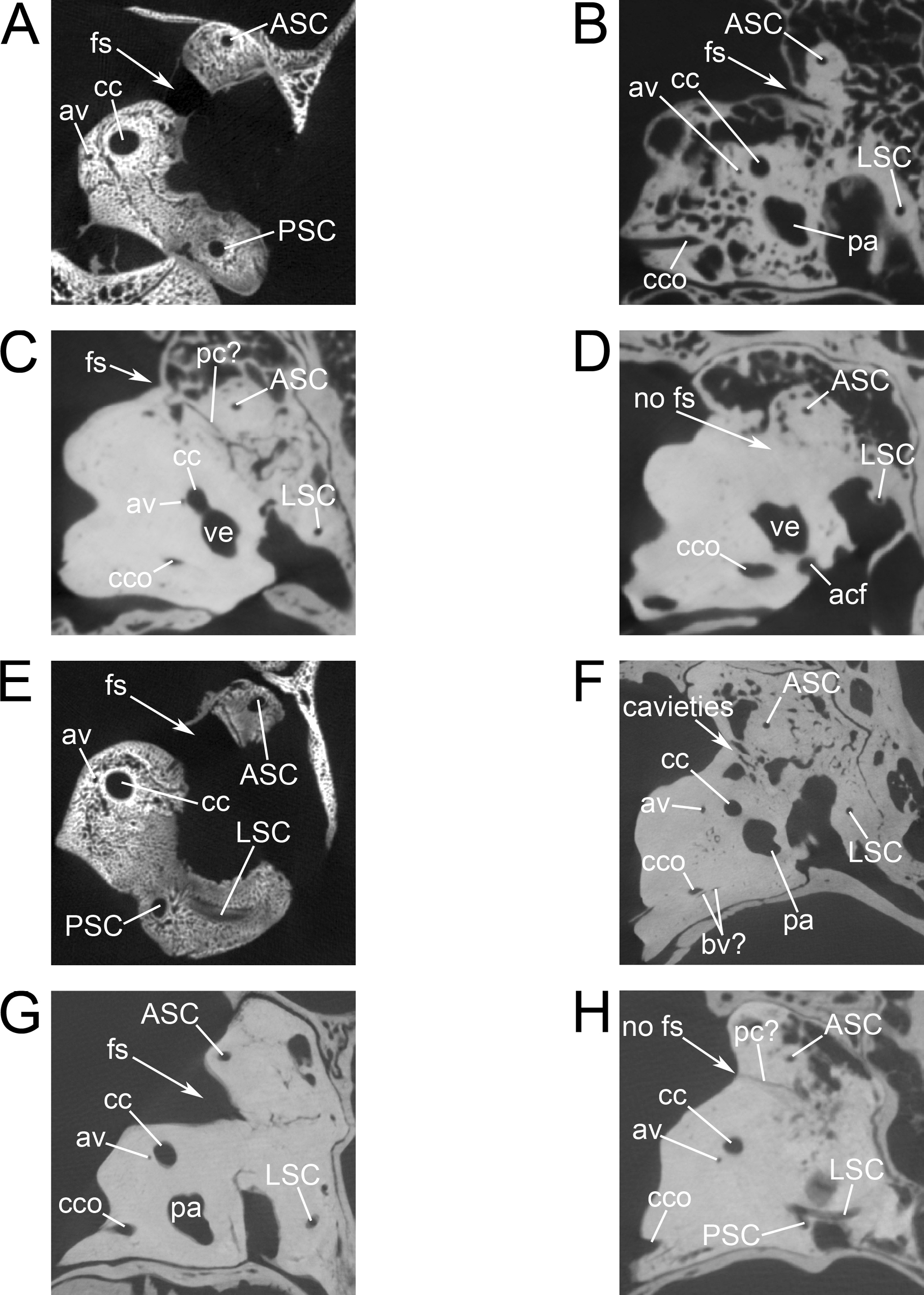
|
||
|
µCT images of the bony labyrinth in Panthera species showing selected structures and ontogenetic transformation of the fossa subarcuata. A neonate P. leo (SMF 95010, IDAS 1.1, right side, transversal), B infant P. leo (SMF 15765, IDAS 1.2, right side, transversal); C infant P. leo (SMF 38325, IDAS 1.3, right side, transversal); D adult P. leo (SMF 4643, right side, oblique transversal); E neonate P. tigris (SMF 15722, IDAS 1.1, left side mirrored, transversal); F adult P. tigris (SMF 15737, right side, transversal); G infant P. pardus (SMF 15745, IDAS1.2, left side mirrored, transversal); H adult P. pardus (SMF 94342, IDAS 3, right side, transversal). Abbreviations: aa, anterior ampulla; acf, aperture of the cochlear fossula; ASC, anterior semicircular canal; av, aquaeductus vestibuli; bv, canal for blood vessels; cc, crus commune; cco, canaliculus cochleae; fs, fossa subarcuata; la, lateral ampulla; LSC, lateral semicircular canal; pa, posterior ampulla; pc, petromastoid canal; PSC, posterior semicircular canal; scc, secondary crus commune; ve, vestibule. Not to scale. |